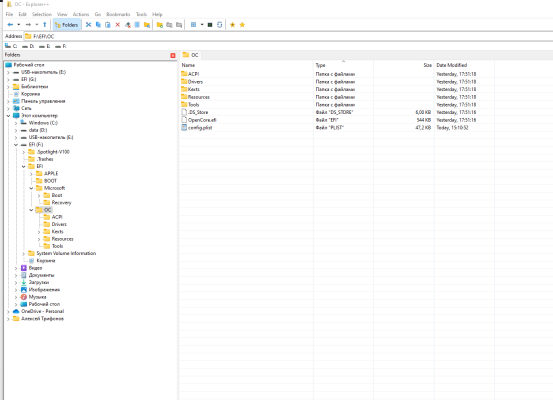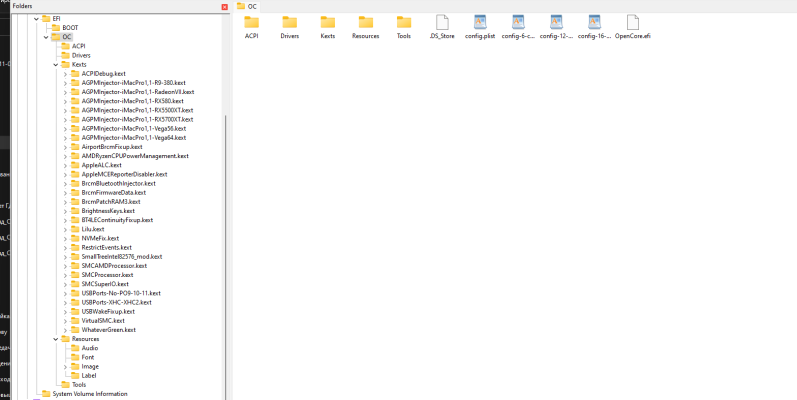- Joined
- Dec 16, 2012
- Messages
- 14
- Motherboard
- B550 Vision D-P F11
- CPU
- Ryzen 7 3700X
- Graphics
- RX 6600 XT + GT 710
- Mobile Phone
Unfortunately, a logo and a download bar appear, that's all, although the installer itself loads without problems and allows you to start the installation. That's why I asked for a config.@Fanuil
This is very common when installing Windows updates, and this is why we recommend installing NVMe SSDs in the slots closest to CPU.
This problem means that Windows has installed its boot loader in the macOS EFI folder.
To fix the problem, boot from your USB flash disk (OpenCore 0.7.2 is okay). At the OpenCore Picker, select the macOS disk and login to macOS.
Then mount EFI partition of macOS SSD and expand the EFI folder. Post a screenshot.
Also mount EFI partition of your Windows SSD (if that disk also has EFI partition) and expand the EFI folder. Post a screenshot of that as well.
Finally, please edit your post and remove the foreign language paragraph because it violates the Rules. A post can only be in English.
ps Edited the post, haven't read the rules for a long time
Last edited:


